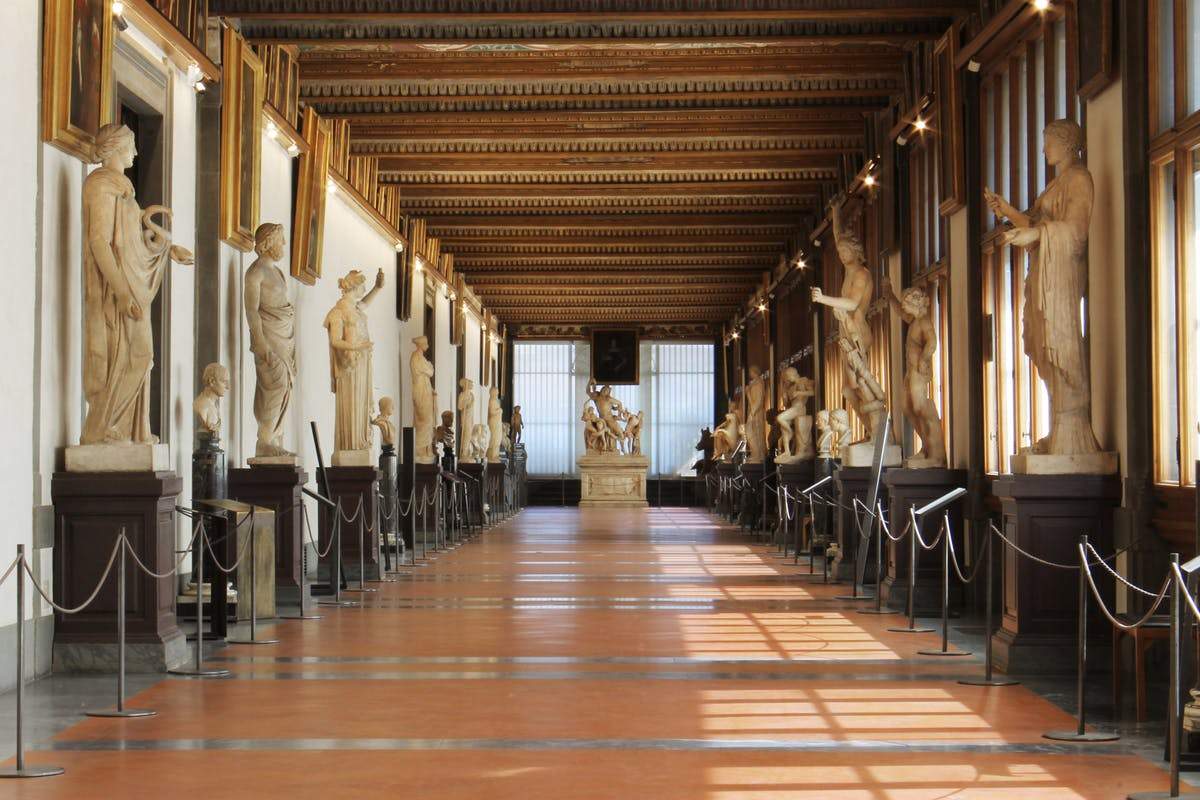Sangiuliano-Schmidt backlash. The Uffizi: Chronic staff shortage, we ask for reinforcements.
The tenure of new minister Gennaro Sangiuliano starts with a spat with the Uffizi Galleries. The object of contention is the closure of the Florentine museum on Monday, October 31, during All Saints’ Day: on Mondays, the Uffizi is usually closed like many Italian museums, and for this bridge they were no exception, despite the fact that in the past, for similar occasions, they have instead opened their doors. To the minister, the closure did not go down well (it is a “very serious” fact, he said), and so he thought of writing a letter to museum director Eike Schmidt.
“Dear Director,” Sangiuliano wrote, “I have learned from the press that on Monday, October 31, the Uffizi Galleries would be closed, thus preventing thousands of visitors from being able to visit them during the All Saints’ Day long weekend. It is my understanding that in similar circumstances other museums and the Uffizi itself have modified the normal weekly closing day in advance precisely to avoid inconvenience to visitors and tourists. I ask if this reconstruction is true. If it is, and I would consider it very serious, I would like to know why in this circumstance it was not done as in the past. It does not escape your intelligence that a closure of this kind, in addition to constituting a loss of revenue, represents damage to the image of the Uffizi Galleries and the entire National Museum System.”
The Uffizi’s lengthy response came on Wednesday evening: according to the museum, what prevented an extraordinary opening was the chronic shortage of staff, moreover already complained about by Schmidt just a few weeks ago. “I would like to thank Minister Gennaro Sangiuliano for having with great candor immediately intervened on perhaps the most critical issue at this sensitive time for the state museum sector: that of staff shortages,” was how Schmidt began his response. “For years, as director of the Uffizi, I have been asking the Ministry for reinforcements, because the hiring of Human Resources is not the responsibility of individual museums with partial autonomy, but of the central offices of the Ministry. After the halt due to the pandemic, this year visitors are fortunately returning impetuously, and again the Uffizi is driving the city’s economy. This is also demonstrated by the numbers this past All Saints’ Day weekend, during which as many as 55,611 people visited the museums of the Uffizi Galleries between Saturday and Tuesday. However, on Monday, Oct. 31, we were only able to open the Boboli Gardens, with 7,338 visitors enjoying the fine weather, but not the Statues and Paintings Gallery or the Pitti Palace. Like Minister Sangiuliano, I too find it very serious that the Uffizi and the Galleria dell’Accademia were closed on Monday, and the Bargello even on Tuesday, November 1, for the same serious reason, which is the severe staff shortage in state museum facilities. In recent years we have repeatedly sent reports on this issue to the higher Ministry, but the problem has always worsened.”
“Despite this situation,” Schmidt explained, “in past years we have been able to offer numerous extraordinary openings on Mondays and evenings to the public. These openings are based on the willingness of staff to work overtime-and get paid extra-on these occasions. However, a regulation that intervened two years ago limits the earnings increment to 15 percent of each employee’s gross annual tabular salary.Therefore, this year we have been able to offer special openings with great success in the spring and again in the summer, but too many of the assistants in the auditorium who willingly join these initiatives-however, fewer and fewer due to retirements-have reached or are approaching this limit. We have also asked the Ministry in recent years to be able to increase the service (paid for with museum funds) of the Ministry’s in-house company Ales, or to tender some parts of the security service to an outside firm, but for both requests we have received a negative response. Even the staff of the museum services concessionaire can only supplement the supervision with a number of support units, because the job description of that staff differs from that of state museum assistants. The idea, which exists on paper, of moving the weekly closing day to Wednesday or Thursday has never been implemented at the Uffizi, because in such a complex machine, which requires theinteraction of so many different companies-from electricians to metal detector operators, from the state support company to the reception concessionaire, and so on-with different staff and contracts, it has always proved impractical: but above all, with thousands of reservations even from travelers from other continents, planned well in advance and already in place throughout this week, the economic and image damage of an unusual midweek closure of the Uffizi would in all evidence have nullified the likely extra income on Monday.”
“I will send an extended report to the Minister,” the director concludes, “but for now I assure that I am just as outraged as he is about these closures. Unfortunately, the problem of understaffing is endemic and affects virtually the entire national museum, library and archival landscape. It is now unsolvable without a sharp and decisive top-level intervention that reverses the established practice of recent years. If given the chance, the Uffizi Galleries is available to take this course.”
 |
| Sangiuliano-Schmidt backlash. The Uffizi: Chronic staff shortage, we ask for reinforcements. |
Warning: the translation into English of the original Italian article was created using automatic tools. We undertake to review all articles, but we do not guarantee the total absence of inaccuracies in the translation due to the program. You can find the original by clicking on the ITA button. If you find any mistake,please contact us.





























